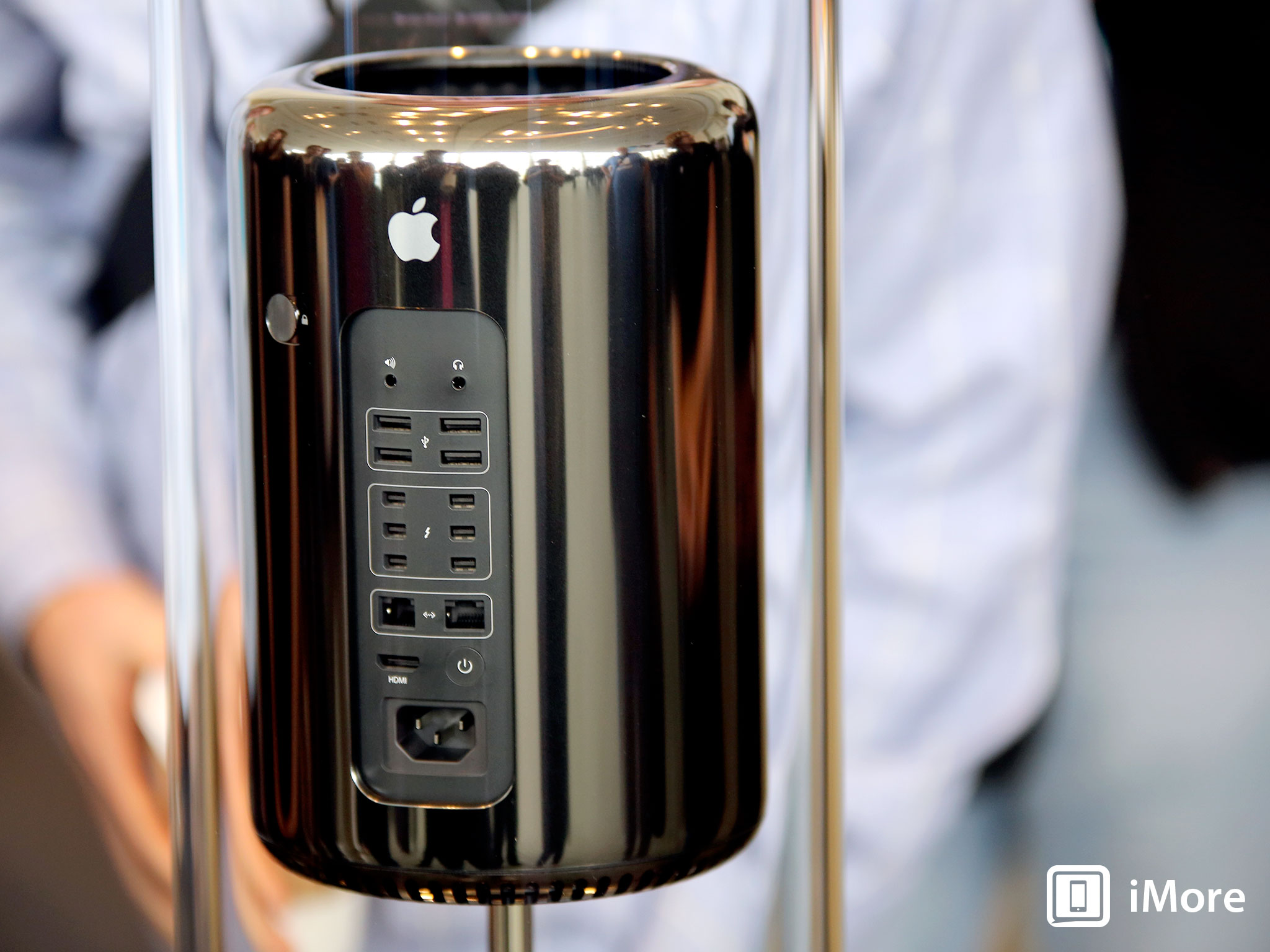A closer look at the new Mac Pro

Over the past few weeks I've spent a lot of time writing about the Mac Pro - how to keep it alive a while longer, its importance as Apple's most high-performance computer, and what I thought the future was likely to hold for the aging but still powerful machine.
Well, Apple finally gave us a glimpse of that future today. The new Mac Pro is a huge departure from the old one - Apple started with a fresh sheet of paper and really rethought what the purpose of a "pro" computer is. In the process, they're giving us something completely new.
The new Mac Pro won't ship until later this year, but when it does, it'll immediately jump to the front of the Mac line in overall performance. Despite the ten year old design of the aluminum-clad Mac Pro, it was no slouch - Geekbench reports show that Mac Pros dating back to 2010 still kick the ass of Apple's next-fastest machine - the 27-inch iMac.
The new machine uses Intel Xeon E5 processors, which won't ship until the third calendar quarter of 2013. This generation of Xeon E5 is based around Intel's Ivy Bridge-EP microprocessor architecture. Apple says the new Mac Pro's floating-point performance alone is twice as fast. Faster Error Correcting Code (ECC) memory running at 1866MHz, connected through a four-channel controller, means the new Mac Pro has twice the memory bandwidth of its predecessor as well.
This move to an Ivy Bridge-EP-based Xeon microprocessor finally allows the Mac Pro to have USB 3.0 and faster a PCIe bus, which Apple is using specifically for Solid State Drive (SSD) storage, eschewing the internal SATA interface used in previous Mac Pros all together. That PCIe-based flash storage is more than twice as fast as a SATA-based SSD and up to 10 times faster than a SATA-based hard drive, according to Apple.
This is liable to disappoint some Mac Pro enthusiasts who enjoy the internal expandability of today's model, but Apple says all expandability on this new machine is external. That's because in addition to four USB 3.0 ports, the new Mac Pro has a total of six Thunderbolt 2 ports.
Thunderbolt 2 offers twice the bandwidth of the original Thunderbolt, which is now standard issue across the Mac line, with half a dozen ports to use - three times as many as any other current Mac model. I anticipate that the Mac Pro will be one of the first, if not the first production computer to have Thunderbolt 2 installed. Intel says that Thunderbolt 2 controller chips (previously code-named "Falcon Ridge"), would go into production later this year, with widespread availability not expected until 2014.
Master your iPhone in minutes
iMore offers spot-on advice and guidance from our team of experts, with decades of Apple device experience to lean on. Learn more with iMore!
Thunderbolt 2 will be used to channel external video, and the massive bandwidth will enable Mac Pro users to drive up to three displays at 4K resolution. 3840 x 2160 is a lot of pixels, and you need more than just bandwidth to push them, so Apple's put dual graphics processors in as standard equipment. The new Mac Pro uses AMD's FirePro GPUs. FirePro isn't a consumer-oriented chip: these are workstation-class graphics processors, and the new Mac Pro comes with two of them. (Plus there's an HDMI cable if you'd like to hook up your Mac Pro directly to a big-screen TV - and with HDMI 1.4 support, that connector will work with the 4K TVs that are coming to market now.)
The cylindrical design of the new Mac Pro eschews an internal SuperDrive. That was an obvious evolution: at this point, the only Macs that still have internal optical drives are the non-Retina Display-equipped MacBook Pros. But that design provides some interesting properties - essentially, the interior of the Mac Pro is a giant aluminum heatsink, wicking away heat from the CPU, GPUs and other components and channeling upward like a chimney. On top of the Mac Pro is a fan to help vent the heat, and Apple says it's quiet. Current Mac Pros can be noisy, so this is a welcome change, especially for digital audio pros who need a quiet studio to record.
As is customary with the Mac Pro, there's not one but two Gigabit Ethernet connections on the new box. Mac Pros often are connected to two different hard-line networks, but those two ports can also be used for link aggregation for even faster data transfers over a Gigabit Ethernet network. And, of course, the new box will support 802.11ac - Gigabit Wi-Fi - and Bluetooth 4.0.
The most amazing part of the new Mac Pro is just how much power Apple has crammed into so small a space. The system measures less than ten inches high, with a diameter of six inches. You could stack eight of these things together in the space of the current Mac Pro. Plus it's got a cool black design that's unlike any other Mac at present, though it's right at home with a black iPhone.
"Can't innovate any more, my ass," said Phil Schiller at WWDC today. He's right - this new Mac Pro shows that Apple still has amazing design skills, and I'm excited to see what the new hardware can do.
The biggest questions I have right now is when is it going to be available and how much is it going to set me back. Apple said nothing about the price of the new machine. Whatever it is, you can count on it being fairly dear - the Mac Pro has always been Apple's highest-priced system. As far as availability is concerned, the Xeon processors that power it won't be out until the third quarter, but Intel is still saying "before the end of the year" for Thunderbolt 2, which could mean anything.
To have a closer look at the box, please check out Apple's preview site.

